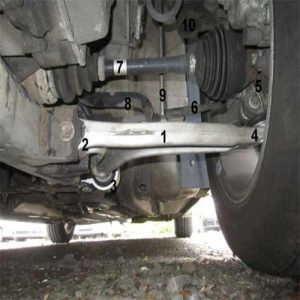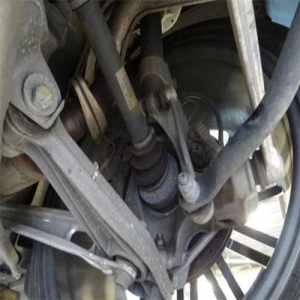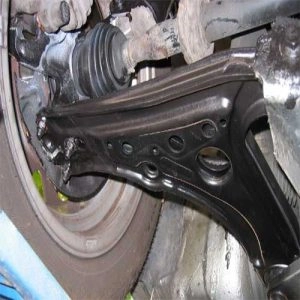The car's arms, also known as the car's control arms, are crucial to the vehicle's steering system. These arms connect the system to the front tires through multiple joints designed to facilitate the steering of the car using the least possible force.
In addition, the arms of the car contain greased ball-shaped joints at the ends to enable the transfer of torque forces through the system. A rubber cover is used to cover these joints, in order to protect them from dirt and maintain their lubrication.
Over time, the rubber surrounding the joints can deteriorate, allowing moisture and dirt to seep into the joints. This can lead to their damage and prevent them from functioning normally.
In this article, we will discuss the car's arms, explain how they work, and highlight six important signs of damage that should be paid attention to.
How to work on a car's arms

Here, we aim to briefly explain how the car's arms work:
There is a steering system called "Rack and Pinion" that most modern vehicles use currently. This system includes the steering arms that assist in moving the front tires of the car.
The car's arms are attached at the ends of the rack, where the gear moves on the rack's teeth when the driver turns and moves the steering wheel to the right.
This action pulls the arms into the left frame, and pushes them into the right frame, helping to steer the car to the right. If the driver turns the steering wheel to the left, the same process happens but in reverse. That is, the arms are pulled into the right frame, and pushed into the left frame, which then directs the car to the left.
It's worth noting that the steering arms can remain serviceable for several years, and you may never need to replace them throughout your use of the vehicle. However, everything depends on driving conditions, as exposure to road obstacles or minor accidents can damage the vehicle's arms. In such cases, it is essential to inspect and replace them if necessary, because they are crucial and heavily utilized in the vehicle. Therefore, experts recommend regularly checking the arms to ensure they are in good working order.
Also read:5 Reasons Indicating Damage to the Steering Column
Signs of Car Arm Damage

Here is an explanation of the main signs indicating damage to the car's control arms:
Steering Wheel Vibration:Arms play an important role in maintaining the stability of the suspension system. If the ball joints are damaged, it will cause instability in the suspension parts, resulting in vibrations in the steering wheel while driving the car. These vibrations increase significantly with the acceleration of the car, and when passing through turns.
2- Problem with the alignment of the front tires:One of the roles of a car's arms is to maintain the alignment of the front tires. If the ball joints wear out or become damaged, the front tires may lose their stability. You'll notice that the car tends to veer to the right or left when driving forward without any intervention from you.
If your car veers to the left or right while driving on a flat road, and the steering wheel is in its straight position, then you should check the alignment of your car.
3- Move the steering wheel freely:You might find this strange to read, but indeed, sometimes while driving, you may notice that the steering wheel is not secure, moving easily, and can be turned faster than usual with greater smoothness. This problem is caused by damage to the car's arms. Normally, the steering wheel should be more stable and heavier if you're driving at high speed. The condition of the steering wheel moving freely is called "steering wheel play."
4- Hearing a squeaking noise in the front while turning:When you hear a squeaking sound while turning, the cause could be insufficient lubrication of the ball joints. This sound is different from the groaning noise produced by the steering wheel when the oil level is low. It is essential to check this sound and take necessary actions quickly.
In fact, the noise could be due to damage to the car's axle or front wheel bearing. Therefore, it's essential to check several other parts before changing the car's arms, as they might be the cause of the issue.

5- Abnormal tire tread wear:When the inner or outer tread of the front tires wears out unusually, it may indicate the tires are not properly aligned. Damage to the car's arms can lead to quicker wear on the outer or inner edges of the tire. By examining the condition of the front tire edges, you can determine if there is any abnormal wear and address the problem if found.
As mentioned in the previous paragraph, the cause behind the abnormal tire wear could be poor alignment, improper tire balancing, or inappropriate tire pressure. Therefore, it is necessary to have the car inspected by a specialized technician to determine the real cause.
6- Car Vibration:When the rotors wear out abnormally, you may notice the whole car vibrating. These vibrations intensify with acceleration, making the car harder and less comfortable to drive. This occurs if the car has been exposed...Car ArmsFor total damage, this is very dangerous, because the tires are not fixed, they vibrate a lot, and then you may not be able to steer the car.

Comments